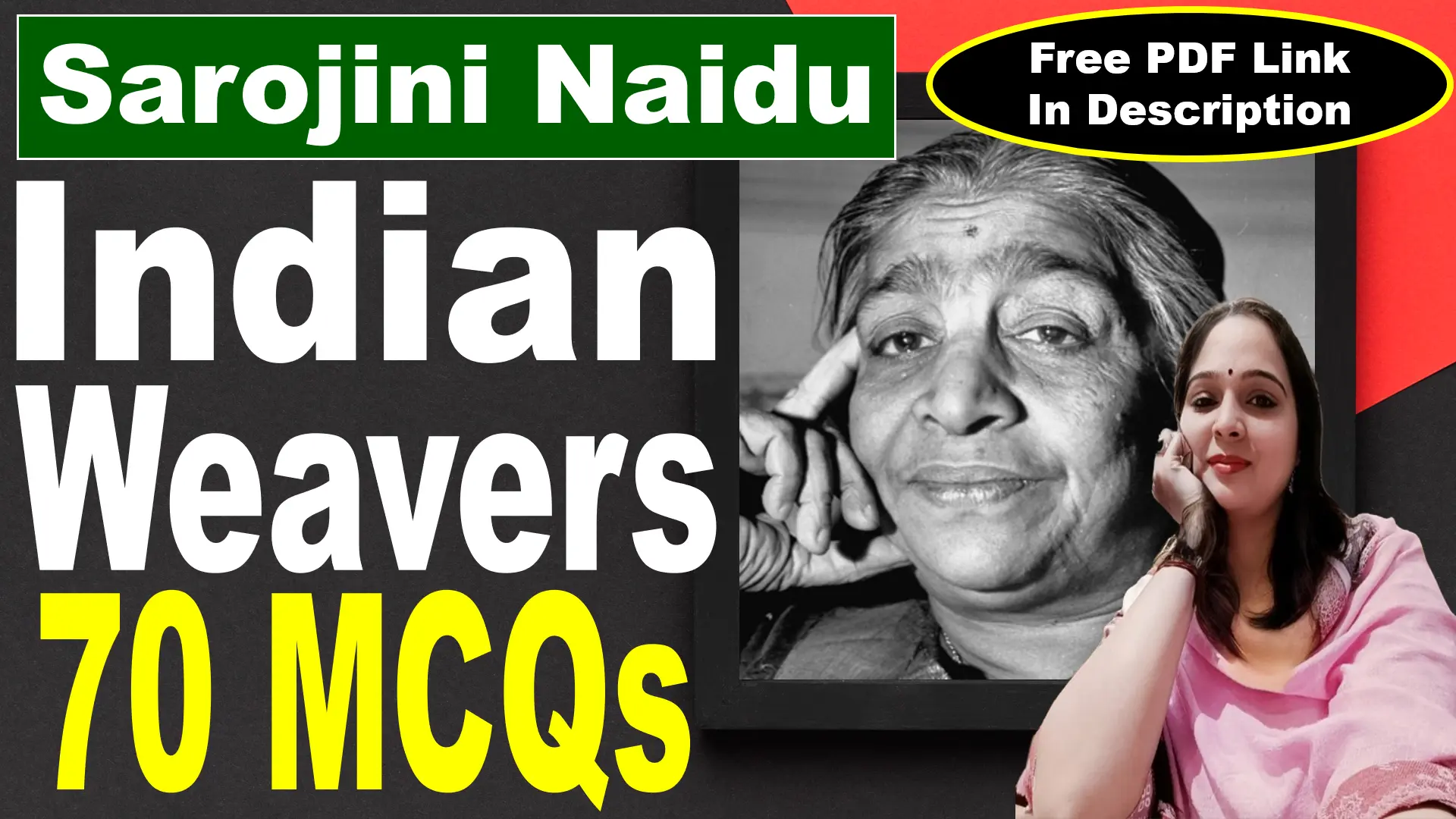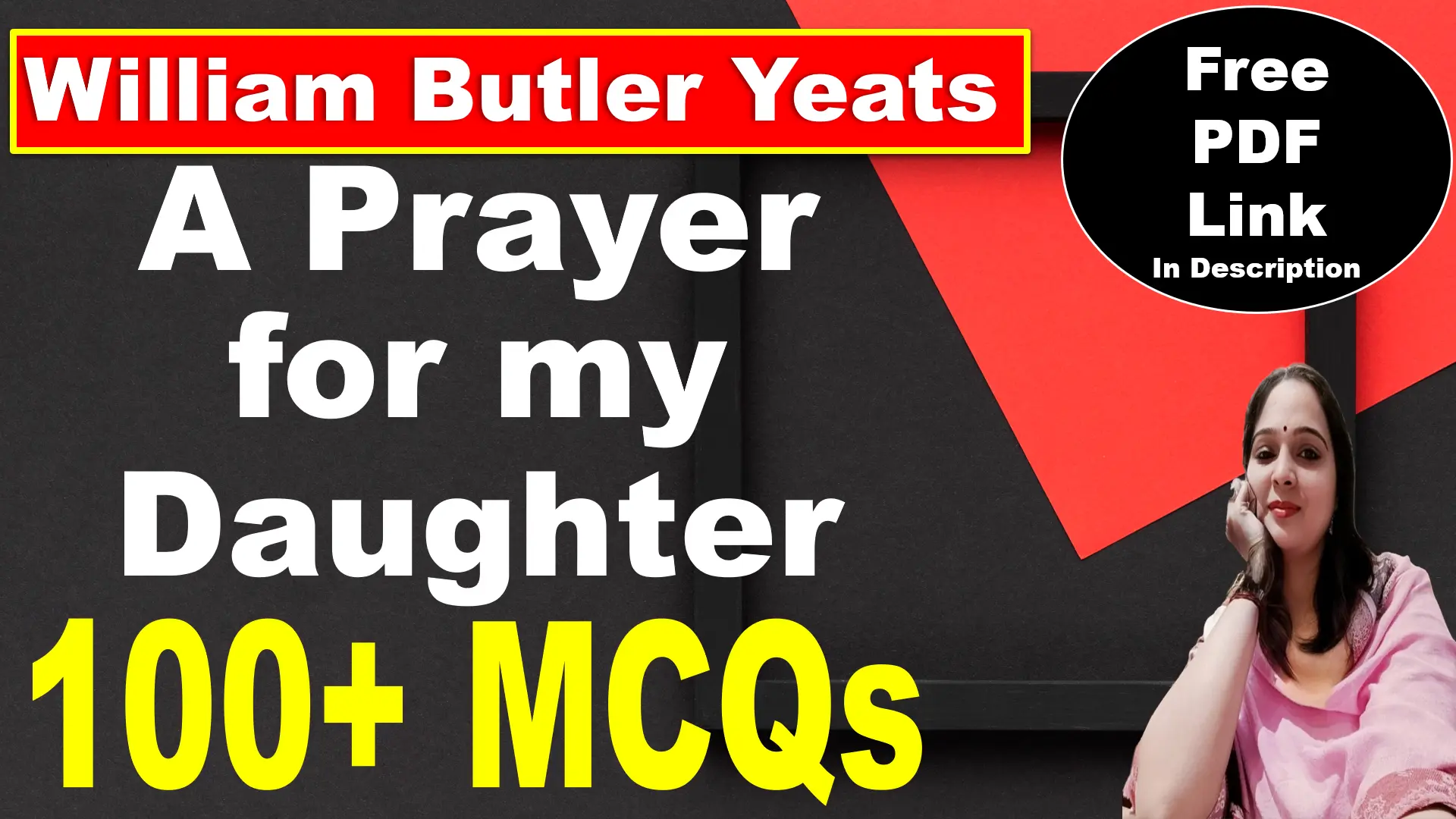
1. Who is considered one of the first Indian authors to write a novel in English?
a) R.K. Narayan
b) Bankim Chandra Chattopadhyay
c) Raja Rao
d) Mulk Raj Anand
Answer: b) Bankim Chandra Chattopadhyay
Explanation: Bankim Chandra Chattopadhyay is widely regarded as a pioneer of Indian literature, and his novel Rajmohan’s Wife (1864) is considered one of the first Indian novels in English. A Bengali writer, he initially wrote in English before switching to Bengali, where he gained fame with works like Anandamath. R.K. Narayan, Raja Rao, and Mulk Raj Anand came later, flourishing in the 20th century with their distinct styles, but Bankim’s early contribution marks him as a trailblazer in this context.
2. Which novel by R.K. Narayan is set in the fictional town of Malgudi?
a) Kanthapura
b) The Guide
c) Untouchable
d) Train to Pakistan
Answer: b) The Guide
Explanation: R.K. Narayan’s The Guide (1958) is a celebrated novel set in his fictional South Indian town, Malgudi, a recurring backdrop in his works. It tells the story of Raju, a tour guide turned spiritual figure, blending humor and pathos. Kanthapura is by Raja Rao, Untouchable by Mulk Raj Anand, and Train to Pakistan by Khushwant Singh, none of which feature Malgudi. Narayan’s creation of Malgudi offers a timeless, relatable Indian setting that defines his literary legacy.
3. Who wrote the famous novel “Midnight’s Children”?
a) Salman Rushdie
b) Arundhati Roy
c) Vikram Seth
d) Jhumpa Lahiri
Answer: a) Salman Rushdie
Explanation: Midnight’s Children (1981) by Salman Rushdie is a seminal work in Indian English literature. It won the Booker Prize and was later awarded the “Booker of Bookers.” The novel follows the life of Saleem Sinai, born at the exact moment of India’s independence, whose life becomes a metaphor for the nation’s journey. The novel uses magical realism to intertwine personal and political history, blending mythology, memory, and fantasy.
4. Which poet is known for the collection “Gitanjali,” which won the Nobel Prize in Literature?
a) Sarojini Naidu
b) Rabindranath Tagore
c) A.K. Ramanujan
d) Nissim Ezekiel
Answer: b) Rabindranath Tagore
Explanation: Rabindranath Tagore’s Gitanjali (1910), a collection of spiritual poems, earned him the Nobel Prize in 1913, making him the first non-European laureate. Written in Bengali and later translated into English, it reflects deep mysticism and humanism.
5. Which of the following is a famous work by Arundhati Roy?
a) The Inheritance of Loss
b) The God of Small Things
c) A Suitable Boy
d) The White Tiger
Answer: b) The God of Small Things
Explanation: Arundhati Roy’s The God of Small Things (1997) is her debut novel, winning the Booker Prize for its lyrical exploration of family, caste, and love in Kerala. The Inheritance of Loss is by Kiran Desai, A Suitable Boy by Vikram Seth, and The White Tiger by Aravind Adiga. Roy’s intricate storytelling and social critique in this work have made it a standout in contemporary Indian literature, distinct from the other listed novels.
6. Who is the author of the novel “A Suitable Boy”?
a) Vikram Seth
b) Amitav Ghosh
c) Ruskin Bond
d) Khushwant Singh
Answer: a) Vikram Seth
Explanation: Vikram Seth is the author of A Suitable Boy (1993), one of the longest novels ever published in a single volume in the English language. The book is set in post-independence India and follows the story of Lata and her mother’s quest to find her a suitable husband. The novel offers a panoramic view of Indian society, politics, and family life, blending personal drama with historical context.
7. Which novel by Mulk Raj Anand addresses the issue of the caste system?
a) Coolie
b) Untouchable
c) The Village
d) Two Leaves and a Bud
Answer: b) Untouchable
Explanation: Untouchable (1935) by Mulk Raj Anand is a powerful novel that exposes the inhumane treatment of the Dalits (formerly called untouchables) in Indian society. The story unfolds in a single day and follows Bakha, a young sweeper. Anand uses stark realism and empathy to challenge caste-based discrimination, making it a pioneering text in Indian social realism and a major contribution to Dalit literature.
8. Which Indian poet is often called the “Nightingale of India”?
a) Kamala Das
b) Sarojini Naidu
c) Toru Dutt
d) Meena Alexander
Answer: b) Sarojini Naidu
Explanation: Sarojini Naidu, known as the “Nightingale of India,” earned this title due to her lyrical and melodic poetry that often revolved around themes of Indian culture, nature, and patriotism. Her poetry collections, such as The Golden Threshold, are admired for their romanticism and vivid imagery. Besides being a poet, she was also an active freedom fighter and one of the first Indian women to hold a prominent political position.
9. Who wrote the novel “The White Tiger,” which won the Man Booker Prize?
a) Aravind Adiga
b) Kiran Desai
c) Rohinton Mistry
d) Anita Desai
Answer: a) Aravind Adiga
Explanation: Aravind Adiga won the Man Booker Prize in 2008 for The White Tiger, a bold and satirical novel that offers a critique of class struggle, corruption, and social inequality in modern India. Told through the voice of Balram Halwai, a village boy turned entrepreneur, the novel explores his journey from servitude to self-made success in a brutally capitalist society. It is known for its dark humor and critical perspective.
10. Which of these works is a collection of short stories by Jhumpa Lahiri?
a) The Namesake
b) Interpreter of Maladies
c) Unaccustomed Earth
d) Both b and c
Answer: d) Both b and c
Explanation: Jhumpa Lahiri’s Interpreter of Maladies (1999), a Pulitzer Prize winner, and Unaccustomed Earth (2008) are acclaimed short story collections exploring immigrant identity and relationships. The Namesake (2003) is her novel about an Indian-American family. Both Interpreter and Unaccustomed Earth showcase her mastery of the short story form, delving into cultural displacement with subtlety, making “d” the correct choice.
11. Which novel by Raja Rao is considered a classic of Indian English literature?
a) The Serpent and the Rope
b) Kanthapura
c) The Cat and Shakespeare
d) Both a and b
Answer: b) Kanthapura
Explanation: Kanthapura, published in 1938, is widely regarded as a classic of Indian English literature. It beautifully captures the essence of Indian village life and the Gandhian freedom struggle, blending traditional storytelling with modern narrative techniques. While The Serpent and the Rope (1960) is also a significant work by Raja Rao, exploring philosophical and cultural themes, Kanthapura is more universally recognized as his quintessential classic. The Cat and Shakespeare (1965) is less celebrated in this context.
12. Who is the author of the historical novel “The Shadow Lines”?
a) Amitav Ghosh
b) Shashi Tharoor
c) Ruskin Bond
d) Chetan Bhagat
Answer: a) Amitav Ghosh
Explanation: Amitav Ghosh’s The Shadow Lines (1988) is a semi-autobiographical novel that addresses themes of identity, nationalism, and the division of India and Bangladesh. The narrative is non-linear, weaving together the past and present, and focusing on the concept of borders and the concept of home. The novel won the Sahitya Akademi Award and is widely praised for its deep philosophical insights into the human condition, history, and the idea of belonging.
13. Which poet’s work includes the collection “The Striders”?
a) Nissim Ezekiel
b) A.K. Ramanujan
c) Jayanta Mahapatra
d) Dom Moraes
Answer: b) A.K. Ramanujan
Explanation: A.K. Ramanujan’s The Striders (1966) is a collection of his poems that reflect his deep engagement with both Indian and Western literary traditions. Ramanujan explores a variety of themes, such as cultural identity, folklore, family relationships, and the passage of time. His poetry is known for its intellectual rigor and exploration of the complexities of life, often grounded in Indian traditions and values.
14. Which of the following is a work by Khushwant Singh?
a) Train to Pakistan
b) The Company of Women
c) Delhi: A Novel
d) All of the above
Answer: d) All of the above
Explanation: Khushwant Singh was a versatile Indian author known for his novels, short stories, and essays. Train to Pakistan (1956) is his most famous novel, depicting the partition of India in 1947. The Company of Women (1999) explores themes of relationships and sexual politics. Delhi: A Novel (1990) is a historical novel that captures the essence of Delhi, blending fiction with the history of the city. Singh’s works are known for their bold commentary on Indian society.
15. Who wrote the novel “Fasting, Feasting”?
a) Anita Desai
b) Shashi Deshpande
c) Kiran Desai
d) Nayantara Sahgal
Answer: a) Anita Desai
Explanation: Anita Desai’s Fasting, Feasting (1999) is a poignant exploration of the lives of an Indian family. The novel is divided into two sections, one set in India and the other in America, focusing on the themes of family dynamics, isolation, and cultural displacement. It reflects Desai’s signature style of delving into the psychological depth of her characters, especially women caught between cultural expectations and personal desires.
16. Which Indian English poet wrote “Night of the Scorpion”?
a) Nissim Ezekiel
b) Kamala Das
c) Arun Kolatkar
d) P. Lal
Answer: a) Nissim Ezekiel
Explanation: Nissim Ezekiel’s “Night of the Scorpion” (from The Exact Name, 1965) vividly depicts the experience of his mother being stung by a scorpion and the subsequent reactions of the villagers, who engage in rituals to rid her of the venom. The poem blends elements of the supernatural and the mundane, showcasing Ezekiel’s trademark irony and sharp observations on the contradictions within Indian society.
17. Which novel by Kiran Desai won the Man Booker Prize in 2006?
a) The Inheritance of Loss
b) Hullabaloo in the Guava Orchard
c) The Zigzag Way
d) The Village by the Sea
Answer: a) The Inheritance of Loss
Explanation: Kiran Desai’s The Inheritance of Loss (2006) won the Booker Prize for its intricate portrayal of global displacement, immigration, and the complexities of post-colonial identity. Set in the northeastern Himalayas and New York City, it explores the lives of a retired judge, his orphaned granddaughter, and the people around them. The novel delves deeply into issues of cultural identity, class struggles, and the impact of colonialism.
18. Who is the author of “The Great Indian Novel,” a satirical take on the Mahabharata?
a) Shashi Tharoor
b) Vikram Chandra
c) Chetan Bhagat
d) Upamanyu Chatterjee
Answer: a) Shashi Tharoor
Explanation: Shashi Tharoor’s The Great Indian Novel (1989) is a satirical retelling of the Mahabharata, set against the backdrop of modern Indian history. The novel uses the ancient epic as a framework to comment on the political events of 20th-century India, such as the independence movement, the partition, and the rise of the Congress party. It blends humor, historical fiction, and mythology, creating a unique commentary on Indian politics.
19. Which of the following is a work by Ruskin Bond?
a) The Room on the Roof
b) A Flight of Pigeons
c) Our Trees Still Grow in Dehra
d) All of the above
Answer: d) All of the above
Explanation: Ruskin Bond’s The Room on the Roof (1956) is his debut novel, A Flight of Pigeons (1978) a historical novel based on the Indian Rebellion of 1857, and Our Trees Still Grow in Dehra (1991) a short story collection that captures the simplicity and beauty of life in the Indian hills. Known for his gentle, nostalgic style, Bond captures Himalayan life beautifully. All listed works reflect his enduring charm and simplicity, making “d” the correct answer.
20. Which poetess wrote the confessional poem “An Introduction”?
a) Kamala Das
b) Toru Dutt
c) Sarojini Naidu
d) Eunice de Souza
Answer: a) Kamala Das
Explanation: Kamala Das’ “An Introduction” (from Summer in Calcutta, 1965) is a bold and confessional poem in which the poetess speaks about her struggles with identity, sexuality, and societal expectations. The poem challenges the norms imposed on women, particularly in Indian society, and is a powerful declaration of self-expression. Kamala Das’s writing is known for its frankness and sensitivity toward the complexities of womanhood.
21. Which novel by Chetan Bhagat became a popular Bollywood movie titled 3 Idiots?
a) Five Point Someone
b) The 3 Mistakes of My Life
c) One Night @ the Call Center
d) Revolution 2020
Answer: a) Five Point Someone
Explanation: Chetan Bhagat’s Five Point Someone (2004) follows three IIT students navigating academic pressure and friendship. Its relatable humor and youth-centric narrative inspired the blockbuster Bollywood film 3 Idiots (2009), directed by Rajkumar Hirani, starring Aamir Khan. While The 3 Mistakes of My Life became Kai Po Che, and others have distinct themes, Five Point Someone uniquely captured campus life, making it a cultural phenomenon.
22. Who wrote the novel Such a Long Journey, shortlisted for the Booker Prize?
a) Rohinton Mistry
b) Vikram Seth
c) Amitav Ghosh
d) Salman Rushdie
Answer: a) Rohinton Mistry
Explanation: Rohinton Mistry’s Such a Long Journey (1991), shortlisted for the Booker Prize, portrays Gustad Noble, a Parsi bank clerk in 1970s Bombay, entangled in political intrigue. Mistry’s rich storytelling highlights family, faith, and resilience. Mistry’s focus on the Parsi community and historical nuance distinguishes this poignant debut novel.
23. Which poet is known for the collection Jejuri, a sequence of poems about a pilgrimage?
a) Arun Kolatkar
b) Jayanta Mahapatra
c) Nissim Ezekiel
d) A.K. Ramanujan
Answer: a) Arun Kolatkar
Explanation: Arun Kolatkar’s Jejuri (1976), a sequence of 31 poems, that narrates a pilgrimage to Jejuri, a temple town in Maharashtra. The poems explore themes of spirituality, faith, and the complexities of modern life. Kolatkar uses a blend of stark realism and mysticism to comment on the intersection of religious tradition and the everyday struggles of contemporary life. The collection won several accolades, including the Commonwealth Poetry Prize.
24. Which of these is a novel by Shashi Deshpande exploring feminist themes?
a) That Long Silence
b) The Binding Vine
c) A Matter of Time
d) All of the above
Answer: d) All of the above
Explanation: Shashi Deshpande’s novels delve into women’s inner lives. That Long Silence (1988) examines a wife’s silence in marriage, The Binding Vine (1993) grief and solidarity, and A Matter of Time (1996) generational struggles. Her quiet, introspective style critiques patriarchy, making all listed works key feminist texts in Indian English literature, distinct from more dramatic narratives of her peers.
25. Who is the author of the novel Sacred Games, adapted into a Netflix series?
a) Vikram Chandra
b) Aravind Adiga
c) Upamanyu Chatterjee
d) Amitav Ghosh
Answer: a) Vikram Chandra
Explanation: Vikram Chandra’s Sacred Games (2006) is an epic crime novel intertwining a Mumbai cop, Sartaj Singh, and gangster Ganesh Gaitonde. Its sprawling narrative became a hit Netflix series of the same name, produced by Anurag Kashyap in 2018. Chandra’s blend of underworld grit and philosophical depth sets this work apart as a modern classic.
26. Which work by Rabindranath Tagore is a novel originally written in Bengali but widely read in English translation?
a) The Home and the World
b) Gora
c) Chokher Bali
d) All of the above
Answer: d) All of the above
Explanation: Rabindranath Tagore’s Bengali novels—The Home and the World (1916), Gora (1907), and Chokher Bali (1903)—explore nationalism, identity, and love. Translated into English, they’ve reached global audiences. Gora tackles social reform, The Home and the World personal-political conflict, and Chokher Bali widowhood. Tagore’s lyrical humanism shines in all, making “d” correct for their widespread English readership.
27. Which Indian English poet wrote The Golden Gate, a novel in verse?
a) Vikram Seth
b) Dom Moraes
c) A.K. Ramanujan
d) Nissim Ezekiel
Answer: a) Vikram Seth
Explanation: Vikram Seth’s The Golden Gate (1986) is a novel in verse, written in sonnets, chronicling love and life in 1980s San Francisco. A rare feat in English literature, it showcases Seth’s poetic skill beyond his prose like A Suitable Boy.
28. Who wrote the novel The Palace of Illusions, a retelling of the Mahabharata from Draupadi’s perspective?
a) Chitra Banerjee Divakaruni
b) Anita Desai
c) Jhumpa Lahiri
d) Arundhati Roy
Answer: a) Chitra Banerjee Divakaruni
Explanation: Chitra Banerjee Divakaruni’s The Palace of Illusions (2008) is a retelling of the Mahabharata from Draupadi’s point of view. The novel offers a feminist perspective on the epic, exploring Draupadi’s emotions, desires, and internal struggles. It blends mythology with a modern narrative style, giving a fresh voice to a character who has traditionally been depicted as a secondary figure in the Mahabharata.
29. Which novel by Upamanyu Chatterjee humorously depicts the life of an Indian civil servant?
a) English, August
b) The Last Burden
c) Weight Loss
d) The Mammaries of the Welfare State
Answer: a) English, August
Explanation: Upamanyu Chatterjee’s English, August (1988) humorously follows Agastya Sen, a reluctant IAS officer in rural India, grappling with bureaucracy and ennui. The novel delves into Agastya’s internal conflict, his disillusionment with the bureaucracy, and his experiences in a small town as part of his government job. The novel’s humor and irreverent tone make it a classic commentary on the absurdities of government life and post-colonial Indian society.
30. Who is known for the poem The Lotus and was one of the earliest Indian women poets in English?
a) Toru Dutt
b) Sarojini Naidu
c) Kamala Das
d) Meena Alexander
Answer: a) Toru Dutt
Explanation: Toru Dutt is one of the earliest Indian women poets writing in English. Her collection The Lotus (1882) reflects her deep engagement with Western literary forms, while also incorporating themes from Indian culture and mythology. Dutt’s poetry combines traditional forms with vivid imagery and deep emotional resonance. Her works brought attention to the challenges and experiences of Indian women in the 19th century.
31. Which novel by Anita Nair explores the lives of women in a Kerala household?
a) Ladies Coupé
b) Mistress
c) The Better Man
d) Both a and b
Answer: d) Both a and b
Explanation: Anita Nair’s Ladies Coupé (2001) follows Akhila’s train journey, reflecting on women’s lives, including Kerala’s matriarchal echoes, while Mistress (2005) delves into a Kerala dancer’s relationships, rooted in household dynamics. The Better Man (1999) focuses on a man’s redemption, less on women. Nair’s lyrical prose in both Ladies Coupé and Mistress explores female agency within Kerala’s cultural milieu, making “d” apt.
32. Who wrote the novel The Hungry Tide, set in the Sundarbans?
a) Amitav Ghosh
b) Vikram Seth
c) Kiran Desai
d) Salman Rushdie
Answer: a) Amitav Ghosh
Explanation: Amitav Ghosh’s The Hungry Tide (2004) is set in the Sundarbans, weaving a tale of ecologist Piya, fisherman Fokir, and translator Kanai amid tides and tigers. Through these characters, Ghosh explores themes of environmental degradation, the impact of colonialism, and the tensions between modernity and tradition. The Sundarbans themselves are portrayed as a haunting and mysterious backdrop that shapes the characters’ fates.
33. Which poet’s work includes the collection Relations and is known for translating Tamil poetry into English?
a) A.K. Ramanujan
b) Nissim Ezekiel
c) Jayanta Mahapatra
d) Keki N. Daruwalla
Answer: a) A.K. Ramanujan
Explanation: A.K. Ramanujan’s Relations (1971) blends personal and cultural reflections, while his translations of Tamil classics like Kuruntokai showcase his scholarly depth. His work bridges Indian traditions and English modernism, making him a pivotal figure.
34. Which of these is a work by Nayantara Sahgal?
a) Rich Like Us
b) Mistaken Identity
c) Plans for Departure
d) All of the above
Answer: d) All of the above
Explanation: Nayantara Sahgal’s Rich Like Us (1985) critiques Emergency-era India, Mistaken Identity (1988) explores colonial romance, and Plans for Departure (1985) reflects on freedom. A Nehru family member, her political insight infuses all these novels. Their blend of personal and historical narratives distinguishes her voice, making “d” correct for her significant contributions to Indian English literature.
35. Who wrote the novel The Immortals, blending history and mythology?
a) Amish Tripathi
b) Devdutt Pattanaik
c) Ashwin Sanghi
d) Amitav Ghosh
Answer: a) Amish Tripathi
Explanation: The Immortals of Meluha (2010), the first book in the Shiva Trilogy by Amish Tripathi, blends mythology with historical fiction. The novel reimagines the myth of Lord Shiva as a human being, a warrior-turned-god, in an ancient civilization. The series, which also includes The Secret of the Nagas and The Oath of the Vayuputras, explores themes of good versus evil, destiny, and self-discovery, making it a popular series among readers interested in mythology and history.
36. Which poet wrote A Rain of Rites and is known for his vivid imagery of Odisha?
a) Jayanta Mahapatra
b) Arun Kolatkar
c) Dom Moraes
d) Keki N. Daruwalla
Answer: a) Jayanta Mahapatra
Explanation: Jayanta Mahapatra’s A Rain of Rites (1976) is a collection of poems known for their vivid imagery and deep engagement with the landscape, culture, and emotions of Odisha, his native state. Mahapatra’s poetry often reflects the themes of memory, loss, spirituality, and the rural landscape of India. His works are celebrated for their lyrical beauty and their portrayal of human relationships with nature and the divine.
37. Which novel by Manohar Malgonkar is set during the Partition of India?
a) A Bend in the Ganges
b) The Princes
c) The Devil’s Wind
d) All of the above
Answer: a) A Bend in the Ganges
Explanation: A Bend in the Ganges (1964) by Manohar Malgonkar is set during the Partition of India in 1947. The novel explores the personal and political upheaval caused by the Partition, focusing on the lives of the central characters caught in the violence and chaos. The novel is known for its detailed portrayal of the impact of the Partition on individuals and society, offering a historical perspective on the struggle for independence and its aftermath. The Princes (1963) explores royal decline, and The Devil’s Wind (1972) the 1857 revolt. Only A Bend in the Ganges directly tackles Partition’s chaos, blending adventure with historical insight, distinguishing it within Malgonkar’s military-influenced oeuvre.
38. Who is the author of The Blue Umbrella, a popular children’s story?
a) Ruskin Bond
b) R.K. Narayan
c) Anita Desai
d) Sudha Murty
Answer: a) Ruskin Bond
Explanation: Ruskin Bond’s The Blue Umbrella (1980) is a beloved children’s story set in the hill stations of India. The novella tells the story of a young girl named Binya who comes into possession of a beautiful blue umbrella. The story explores themes of innocence, envy, and kindness, and is appreciated for its simplicity and emotional depth. Ruskin Bond’s storytelling often captures the essence of rural India and the beauty of nature.
39. Which work by Kamala Markandaya explores the impact of industrialization on rural India?
a) Nectar in a Sieve
b) A Handful of Rice
c) The Coffer Dams
d) All of the above
Answer: d) All of the above
Explanation: Kamala Markandaya’s novels, including Nectar in a Sieve (1954), A Handful of Rice (1966), and The Coffer Dams (1969), all explore the impact of industrialization on rural India. Nectar in a Sieve focuses on the hardships faced by a rural family as their land and livelihood are threatened by industrial development. A Handful of Rice tells the story of a man’s struggle with poverty and the changing values of society. The Coffer Dams also addresses similar themes of economic change and social transformation.
40. Who wrote the novel Red Earth and Pouring Rain, blending myth and history?
a) Vikram Chandra
b) Salman Rushdie
c) Shashi Tharoor
d) Amitav Ghosh
Answer: a) Vikram Chandra
Explanation: Vikram Chandra’s Red Earth and Pouring Rain (1995) is a novel that blends history, myth, and fantasy. The novel is set against the backdrop of colonial India and tells the story of a painter who is caught between the world of mythology and historical events. The narrative weaves together the personal, the political, and the mythical, offering a rich exploration of India’s history and cultural heritage through a magical realist lens.
41. Which novel by Bhabani Bhattacharya deals with the Bengal Famine of 1943?
a) So Many Hungers!
b) Music for Mohini
c) Shadow from Ladakh
d) A Goddess Named Gold
Answer: a) So Many Hungers!
Explanation: Bhabani Bhattacharya’s So Many Hungers! (1947) poignantly captures the Bengal Famine of 1943, blending social realism with human suffering. It follows a family’s struggle amid starvation and exploitation. Music for Mohini explores urban-rural tensions, Shadow from Ladakh Sino-Indian conflict, and A Goddess Named Gold rural greed. Bhattacharya’s debut stands out for its raw depiction of famine’s toll, a historical tragedy that killed millions.
42. Who wrote the novel The English Teacher, reflecting autobiographical elements?
a) R.K. Narayan
b) Raja Rao
c) Mulk Raj Anand
d) Ruskin Bond
Answer: a) R.K. Narayan
Explanation: The English Teacher (1945) by R.K. Narayan is a semi-autobiographical novel that reflects his own experiences and grief after the death of his wife. The story follows Krishna, an English teacher in a fictional town, who grapples with the loss of his wife while trying to find solace and purpose. The novel explores themes of loss, the afterlife, and the spiritual journey, and is often regarded as one of Narayan’s more introspective works.
43. Who wrote Swami and Friends, a novel about a boy’s adventures in Malgudi?
a) R.K. Narayan
b) Ruskin Bond
c) Raja Rao
d) Mulk Raj Anand
Answer: a) R.K. Narayan
Explanation: Swami and Friends, published in 1935, was written by R.K. Narayan and is the first novel set in the fictional town of Malgudi. It follows the charming and relatable adventures of a young boy named Swaminathan, marking the beginning of Narayan’s celebrated literary career.
44. Which novel by Salman Rushdie explores the Emergency period in India?
a) The Moor’s Last Sigh
b) Shame
c) Midnight’s Children
d) The Satanic Verses
Answer: c) Midnight’s Children
Explanation: Midnight’s Children (1981) by Salman Rushdie is a novel that explores the political and social turmoil in India, especially the period of Emergency (1975-1977) imposed by Prime Minister Indira Gandhi. The story follows Saleem Sinai, born at the exact moment of India’s independence, whose life is interwoven with the fate of the nation. The novel uses magical realism to portray historical events and is considered a masterpiece, winning the Booker Prize.
45. Who wrote the novel The Village by the Sea, later adapted into a TV series?
a) Anita Desai
b) Kiran Desai
c) Ruskin Bond
d) Shashi Deshpande
Answer: a) Anita Desai
Explanation: The Village by the Sea (1982) by Anita Desai is a poignant novel set in a coastal village in India, following the lives of two children, Hari and Lila, as they struggle with family responsibilities. The novel deals with themes of rural life, familial duty, and personal growth. It was later adapted into a TV series, bringing the story of hope and change in a small village to a wider audience.
46. Which work by Sarojini Naidu is a collection of poems reflecting Indian themes?
a) The Golden Threshold
b) The Bird of Time
c) The Broken Wing
d) All of the above
Answer: d) All of the above
Explanation: Sarojini Naidu’s The Golden Threshold (1905), The Bird of Time (1912), and The Broken Wing (1917) weave Indian folklore, nature, and patriotism into lyrical English poetry. Known as the “Nightingale of India,” her work resonates with cultural pride. All three collections showcase her melodic style, making “d” the fitting choice.
47. Who is the author of The Rozabal Line, a thriller blending history and religion?
a) Ashwin Sanghi
b) Amish Tripathi
c) Chetan Bhagat
d) Vikram Chandra
Answer: a) Ashwin Sanghi
Explanation: The Rozabal Line (2007) by Ashwin Sanghi is a historical thriller that blends elements of religion, history, and conspiracy. The novel explores the idea of a hidden truth about the origins of Jesus Christ and weaves a complex narrative involving ancient secrets, modern-day conspiracies, and religious history. It gained popularity for its gripping story and thought-provoking themes about faith and history.
48. Which poet wrote Hymns in Darkness and is known for his urban sensibility?
a) Nissim Ezekiel
b) Jayanta Mahapatra
c) A.K. Ramanujan
d) Arun Kolatkar
Answer: a) Nissim Ezekiel
Explanation: Nissim Ezekiel was a prominent Indian poet known for his urban sensibility and intellectual exploration of the modern condition. His collection Hymns in Darkness (1976) reflects his deep engagement with existential questions, urban life, and the complexities of modern society. Ezekiel’s poetry is characterized by its dry wit, irony, and keen observations of human behavior in the context of a rapidly changing world.
49. Which novel by Jhumpa Lahiri explores the life of an Indian immigrant family in the U.S.?
a) The Namesake
b) Interpreter of Maladies
c) The Lowland
d) Both a and c
Answer: d) Both a and c
Explanation: The Namesake (2003) and The Lowland (2013) by Jhumpa Lahiri both explore the lives of Indian immigrants in the U.S. The Namesake tells the story of Gogol Ganguli, an immigrant navigating the complexities of his Indian heritage and American identity. The Lowland explores the bond between two brothers, one of whom emigrates to the U.S., and the tensions that arise due to differences in ideology and culture. Both novels delve into themes of identity, family, and belonging.
50. Who wrote The Glass Palace, a novel spanning India, Burma, and Malaya?
a) Amitav Ghosh
b) Vikram Seth
c) Rohinton Mistry
d) Shashi Tharoor
Answer: a) Amitav Ghosh
Explanation: The Glass Palace (2000) by Amitav Ghosh is a historical novel that spans multiple generations and geographical regions, including India, Burma (Myanmar), and Malaya (now part of Malaysia). The novel tells the story of the exiled Burmese royal family and their complex relationships with colonialism, politics, and culture. The book explores themes of migration, loss, and identity, weaving together historical events with personal stories of love, family, and survival.





